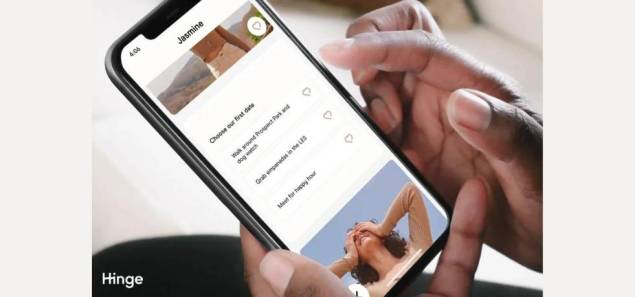Match Group owns several dating apps, such as Tinder and Hinge. On Tuesday, the company posted its first-quarter earnings report, which shows that Tinder’s paying users have gone down for the sixth quarter in a row. Hinge, on the other hand, has more users who are willing to pay for the app. In the first quarter of 2024, Tinder had 10 million paid users, which is 9% less than the same time last year. Also, Hinge now has 1.4 million paid users, which is 31% more than the same time last year.
Because of changes in the way people use relationship apps in recent years, it was clear that Tinder would lose popularity. Younger Tinder users are more interested in important, long-term relationships than in hooking up for a night, which is what the app is known for. Since it started, Hinge has become more famous among people who want to make more serious connections.
Hinge is on track to become a “$1 billion revenue business,” CEO Bernard Kim told investors on a conference call on Wednesday morning. Tinder is having trouble keeping paid users. In the past six years, Hinge’s sales have gone up a lot. In Q1, straight sales reached $124 million, which is a 50% increase from the previous year. Hinge made $396 million all by itself in 2023.
At the moment, one problem Tinder is having is getting people to value its “à la carte” (ALC) features, such as Super Likes, Boosts, “See Who Likes You,” and more. ALC income makes up about 20% of Tinder’s straight income. But in the first quarter of 2024, ALC’s income dropped by 13%. This is different from 2018, when record-high amounts of à la carte items were bought.
During the call, Gary Swidler, CFO of Match Group, said that the slower growth in à la carte income has been going down for a while now. It is “making it harder for us to perform very well” though because it is “getting worse of late.”
“We think the drop in ALC revenue is due to a drop in users and a drop in average purchase volumes,” Swidler said. “This is partly because its younger users are spending less on discretionary items, among other things.” Swidler also said that Tinder payers are expected to drop at similar rates in the second quarter. The business thinks that things will get better in Q3.
The main reason for an à la carte service was to meet the needs of price-conscious Gen Zers and help them get noticed by possible matches at a lower cost. Match says it will keep adding new “à la carte” features to Tinder “at affordable price points” in the coming quarters, Swidler said.
Tinder might want to look at its sister dating app, Hinge, which only has two à la carte features: Boosts and Roses, instead of adding more choices.
Tinder has tried to make the whole experience better by adding new safety features like “Share My Date,” which lets users tell their friends about their date plans. Later this summer, everyone will have to add a face picture to their profile. It will also add an AI Photo Selector tool that picks 10 of the best photos from a user’s camera roll to make their profile look better.
Also Read: Mozilla Has Found That Most Dating Apps Don’t Give Users’ Info Very Much Care
Tinder has been trying to make more money by getting fewer paying users to pay more. For example, they recently added a $499-a-month plan for top users to try to bring in more money. But the company thinks that Tinder’s sales will stay the same or go up by just 1% in the next quarter, coming in at $475 million to $480 million.
What do you say about this story? Visit Parhlo World For more.


